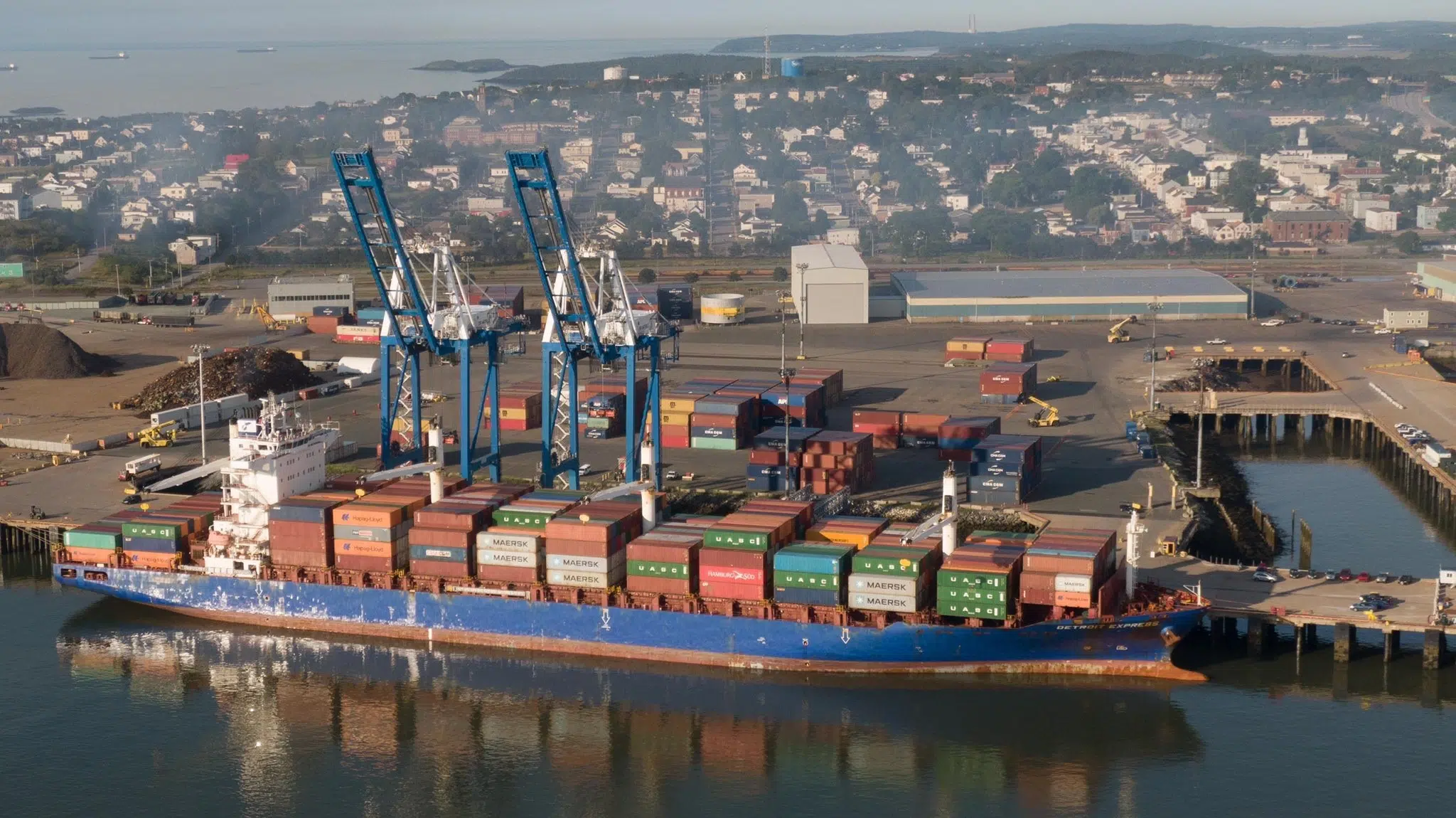
The Hapag-Lloyd vessel Detroit Express carrying international containers bound for locations across North America sits at Port Saint John. (Image: Port Saint John/Twitter)
There may have been a lack of cruise ships in Saint John last year, but the city’s port was still bustling.
Nearly 26 million metric tonnes (MT) of cargo moved through Port Saint John in 2020, a year-over-year increase of two per cent.
Jim Quinn, president and CEO of Port Saint John, said they saw significant increases in a number of areas, particularly the container sector.
“I think that reflects the success that we’ve been having and have invested so much time and effort over the years in building an import business and getting that off the ground,” said Quinn. “It’s off the ground and it’s growing and that’s certainly a contributor to that growth.”
TEUs — also known as twenty-foot equivalent units — increased by 15 per cent to 79,179 while overall tonnage was up by 19 per cent to 580,279 MT.
It was the third consecutive year of growth in the container sector for the port, which has been working to build back container business since Tropical Shipping shifted to Halifax in 2017.
The number of TEUs dropped to 57,402 in 2017 from 90,262 the year before. But since 2017, the sector has increased by nearly 38 per cent.
“Fortunately, DP World is our terminal operator and just a great partner. We were successful in getting CMA CGM in here. CMA CGM, together with MSC, have been continuing to build the tonnage and continuing to build the TEUs over the previous three years,” said Quinn.
Quinn said there is potential for even higher growth this year with Hapag-Lloyd — which he described as a major shipping line in the world scene — becoming a regular container service provider at the port.
“They’ve made their decision to begin a service into Saint John, in partnership with Canadian Pacific, which is good news in terms of import and export containers,” he said.
Canadian Pacific, which recently extended its long-term rail service agreement with Hapag-Lloyd through 2025, regained access to Port Saint John in 2020 after acquiring the Central Maine & Quebec Railway and through connections with the New Brunswick Southern and Eastern Maine railways.
The continuation of the $205-million West Side Modernization Project construction, which launched early in 2020, is also expected to positively impact container cargo in the years ahead.
Container traffic was not the only area of significant growth for Port Saint John in 2020. Quinn said dry bulk cargo was up 31 per cent — from 649,272 MT in 2019 to 854,243 in 2020 — driven primarily by Saskatchewan-mined Nutrien potash.
“Our Canadian potash is in demand. It should be an excellent year for export of Canadian potash. Most of that goes out through Vancouver, Portland, Ore., and of course, Saint John,” he said.
Liquid bulk held steady in 2020, accounting for more than 94 per cent of all cargoes moving through Port Saint John.
The break bulk sector, which represents only 0.01 per cent of all cargoes, is the only sector which experienced a decrease, dropping from 7,209 MT tonnes in 2019 to 2,935 MT in 2020.







